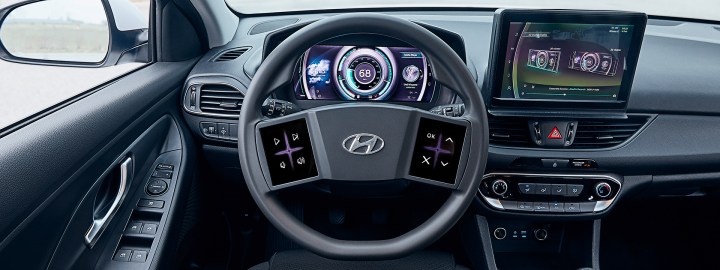
For the last few years, Hyundai has been working on modernizing the car cockpit. While it may seem like the stuff of science fiction, the carmaker is searching for new ways to display information in vehicles that make the necessities easy to access for drivers without causing a distraction that would require them to take their eyes off the road. Now the company is reporting the results of its first study designed to determine if its dashboard of the future could improve driver safety.
With the help of the Würzburg Institute for Traffic Science (WIVW), Hyundai set out to determine if its new virtual cockpit could help eliminate some of the distractions that cause drivers issues while behind the wheel. What it found is that the new display design was able to meet all of the requirements put forth by vehicle safety associations including the Alliance of Automobile Manufacturers and the National Highway Traffic Safety Administration.
According to Hyundai, the virtual cockpit is “significantly below the limits” of distraction. In more complex uses, the test determined that Hyundai’s digital dashboard produced “only a slight distraction” that was noticeable but not strenuous or interfering with the task of driving. The drivers involved in the study also reported to liking the design of the display, finding the visual interface and haptic feedback to be intuitive.
“We chose the i30 to demonstrate that innovations are not limited to higher-segment vehicles. Hyundai intends to prove that innovations need to be achievable for a broad customer base,” Regina Kaiser, Human Machine Interface Senior Engineer at Hyundai Motor Europe Technical Center, said in a statement. “We are continuously working on new technologies that make our cars perfectly intuitive and user-friendly.”
It’s worth noting that the study only involved a prototype version of Hyundai’s virtual cockpit. The company is still working to design the technology that will appear in the final product and developments are still being made, though the concept has come a long way since development started in 2015. Of course, the company isn’t alone in developing a virtual dashboard replacement. Audi and other car manufacturers have also been experimenting with the concept.
Editors' Recommendations
- Watch your step! Injuries caused by phone distraction on the rise, study finds
- Pedestrian detection systems don’t work most of the time, AAA study finds
- Genesis, Kia, and Hyundai top 2019 J.D. Power Initial Quality Study


